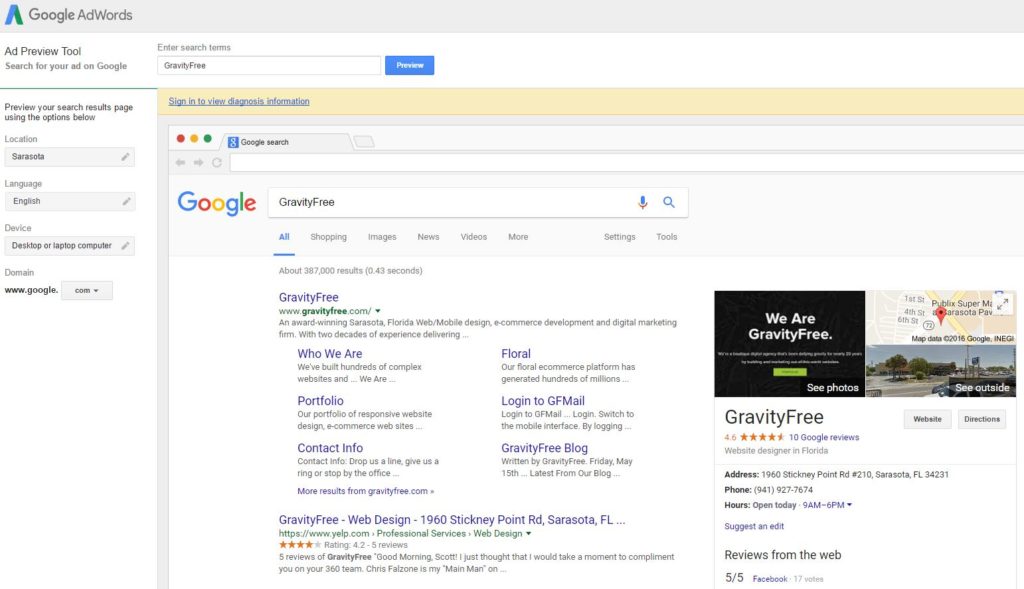Why You Should Use Google’s Ad Preview Tool
Written by Brad Blackburn
onThursday, December 8th, 2016
in Marketing, Search
We’re All Guilty
One thing we’re all guilty of when it comes to monitoring our online presence is performing a quick Google search to see where, and how, we display in search results. The problem is, the results you see and what your potential clients may see could be quite different. This is due to Google having personalized search results – and it impacts both your organic and paid search results.
The good news is that there is a way to see what the majority of searchers will see with Google’s Ad Preview Tool. While this tool was originally designed in the past use with AdWords to preview and diagnose your ads; however, it is also quite useful in seeing how organic listings show for search queries in a particular location.
The tool itself is rather quick and easy to use, too. It’s as simple as setting your location, entering your search terms, and if you’d like selecting the device you’d like to mimic. When you fetch your preview Google will pull the results based solely on their indexes with no outside influences that could skew your results; thus giving you an inaccurate representation of your actual positions.

Another important reason to use Google’s Ad Preview tool is that if you’re routinely searching to see how you show in the results page and you’re utilizing Google AdWords, you are now negatively impacting your Ad’s performance. Each time your ad shows, it is counted as an impression; which if you’re increasing your impressions you are effectively lowing your Click-Through Rate. Google AdWords uses the Click-Through Rate as one of the metrics to determine your Ad Rank – so the lower your click-through rate the lower your ad rank.
So now when you go to take a look at how you’re squaring off with your competition on Google, open up the Ad Preview Tool to see the most accurate representation of your digital presence without risking any ill-effects.
